Sacred for all the Muslims Month of Ramadan has come to an end. Russian Muslims celebrated it on different days – on June, 4 (Moscow, the Republic of Tatarstan, the Republic of Bashkortostan, Chechnya, Crimea, and St. Petersburg) and on June, 5 (Dagestan). However, it does not affect the unity of the Ummah at all – different interpretations of the Moon’s observations take place without going into deeper contradictions.
Some regions of Russia (for example, the Republic of Tatarstan) declared the end of fasting as a holiday. In Republics of Chechnya and Dagestan, Eid al-Fitr was celebrated during three days. Traditionally, four days before the sacred holiday Chechen women do a big cleanup in their houses, sweep in stables and stalls, clean areas adjacent to houses and wash cattle. After the cleaning each member of a family is obliged to perform the ablution of the whole body and put on clean clothes. Everybody is friendly and good-natured on this day. As a sign of greetings, they say: “May Allah send His mercy both to you and us!” As a response, they say: “May Allah accept both our and your prayers!”
On Eid al-Fitr Day early in the morning all men go to mosques, where they take part in the festive worship, while hostesses prepare the festive table. No one is allowed to work on this day. By the time of Eid al-Fitr houses should be cleaned, festive clothes should be prepared and presents for all the relatives should be bought. Muslims must visit their older family members and spend some time with them in order to show their respect.
In Republics of the North Caucasus, from the very morning children can be found outside with open bags, which are immediately filled with candies and other sweets. It is one of the festive traditions: children run from one house to another, where sweets are specially stored for them in advance.
It is remarkable that Eid al-Fitr in Dagestan was celebrated even during the Soviet times. Then people cooked everything themselves and now some dishes are bought. The festive menu should be especially rich. The table should be served with lamb soup. Besides, plenty of various snacks and salads, as well as meat dishes and cheese are expected to be on the table. All kinds of sweets and fruits, for instance, halvah are required. It is eaten on special occasions: on holidays, at weddings and even at funerals. In addition to sweets, there are salads, fried meat, dolma, cabbage rolls, vegetables, fruits and some other dishes on the table.
There is one more traditional dish – eggs with bright stickers. These eggs are an integral part of the traditional Dagestan festive table on Eid al-Fitr.
In mountain villages, where men from the capital go to visit and congratulate their relatives, people are dressed brighter and richer than even in Makhachkala. Women choose bright dresses, very often embroidered with beads or sequins, as if they go to a wedding. Elder people wear traditional papakhas.
This year’s celebrations to mark the end of the month of Ramadan were held in the framework of a city festival in Kazan. The festivities took place in several parts of the city: parishioners of the Mosque of Gaila and Iman Nury Mosque were surrounded with family celebrations. The main scene of the festivities became Gorky Park, where a whole program with master classes for children and adults, along with performance of nasheeds and degustation of national dishes were organized. This scale of the holiday was achieved due to the initiative of the Spiritual Administration of Muslims of the Tatarstan Republic and Muhtasibat of the Vakhitovsky and Volga Districts of Kazan. As Muhtasib of the Vakhitovsky and Volga Districts and Imam-Khatib of the Mosque Across the Kaban, Yusuf Hazrat Davletshin, highlighted, there had been little space for Eid al-Fitr in mosques for a rather long period of time, therefore, the holiday was celebrated in wide city areas, where anyone could take part.
Besides traditional nasheeds and readings of the Noble Quran, children and their parents could take part in various master classes, where they were able to learn how to tie a headscarf beautifully and according to Sharia, study the basics of embroidery and freestyle, make clay products as a gift for relatives or get engaged in coin minting, pass interesting quests and get acquainted with the genealogy of Prophets.
Below there are photos showing how Eid al-Fitr was celebrated in different parts of the country.
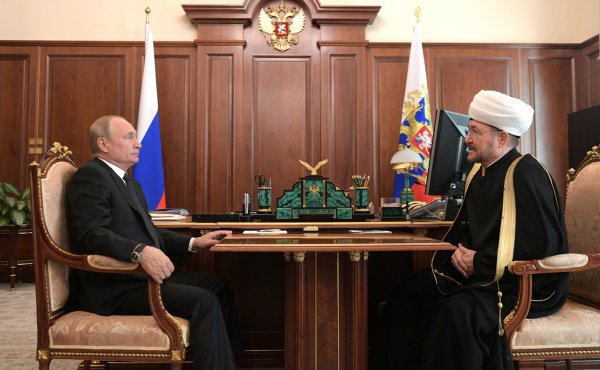
President of Russia Vladimir Putin has met with Chairman of the Russian Council of Muftis Rawil Gaynetdin. The photo: The official website of the President of the Russian Federation
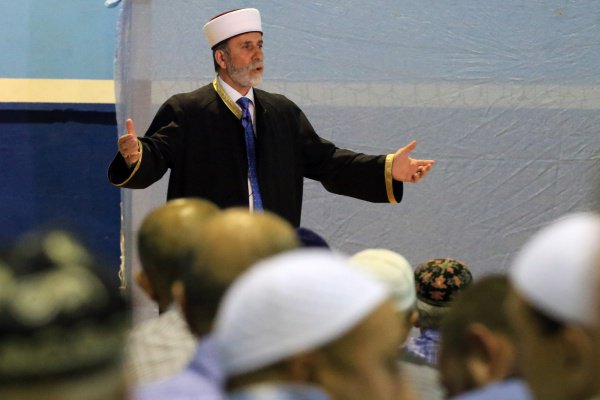
Celebration of Eid al-Fitr in Simferopol. The photo: Pavlishak Aleksey
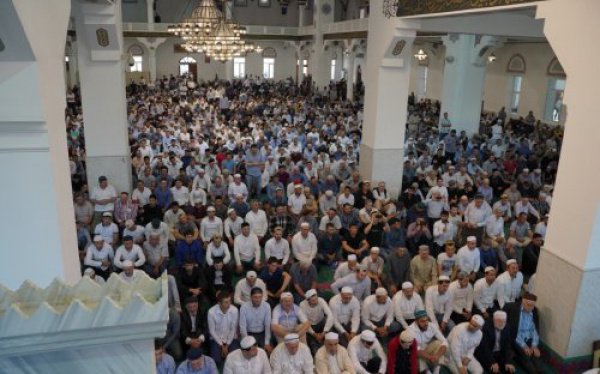
Eid al-Fitr in Dagestan. The photo: muftiate of the Dagestan Republic
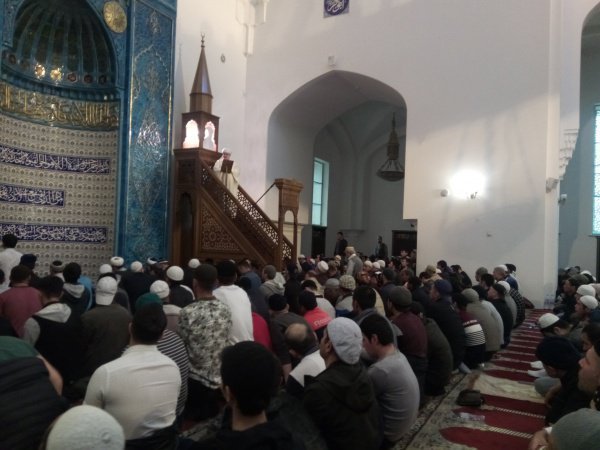
Eid al-Fitr in St. Petersburg. The photo: The Spiritual Administration of Muslims of St. Petersburg and North-Western region of Russia
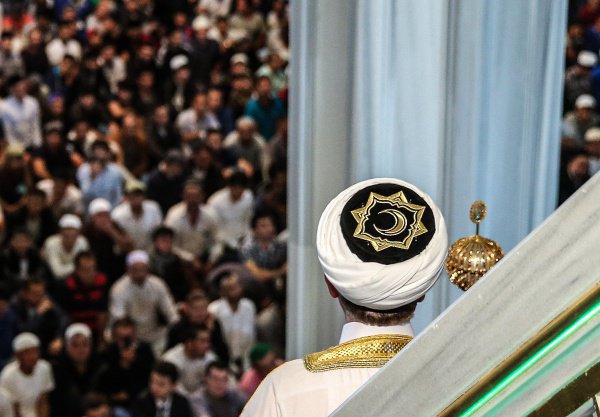
Muslims during the festive namaz on Eid al-Fitr occasion (the Festival of Breaking the Fast) at the Cathedral Mosque. Valery Sharifulin/TASS
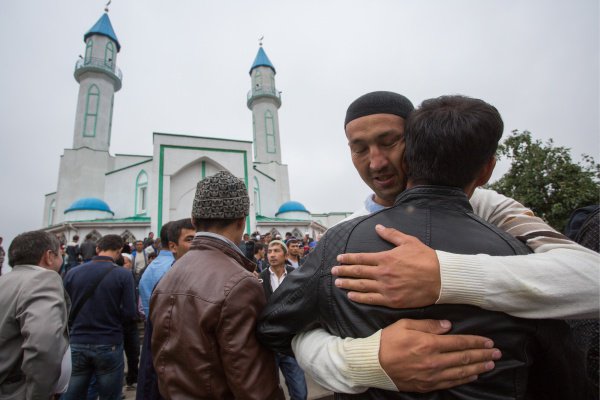
Muslims during the celebration of Eid al-Fitr (the Festival of Breaking the Fast) at the Siberian Cathedral Mosque in Omsk. Dmitry Feoktistov/TASS
Ilmira Gafiyatullina
